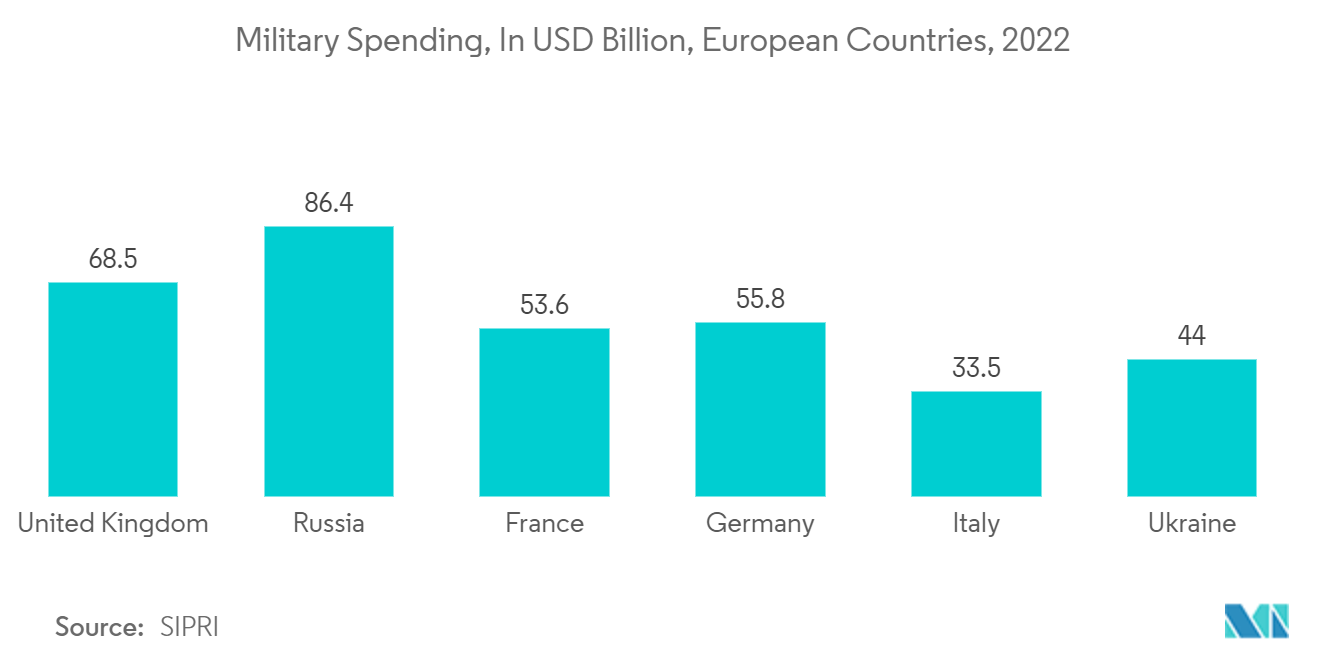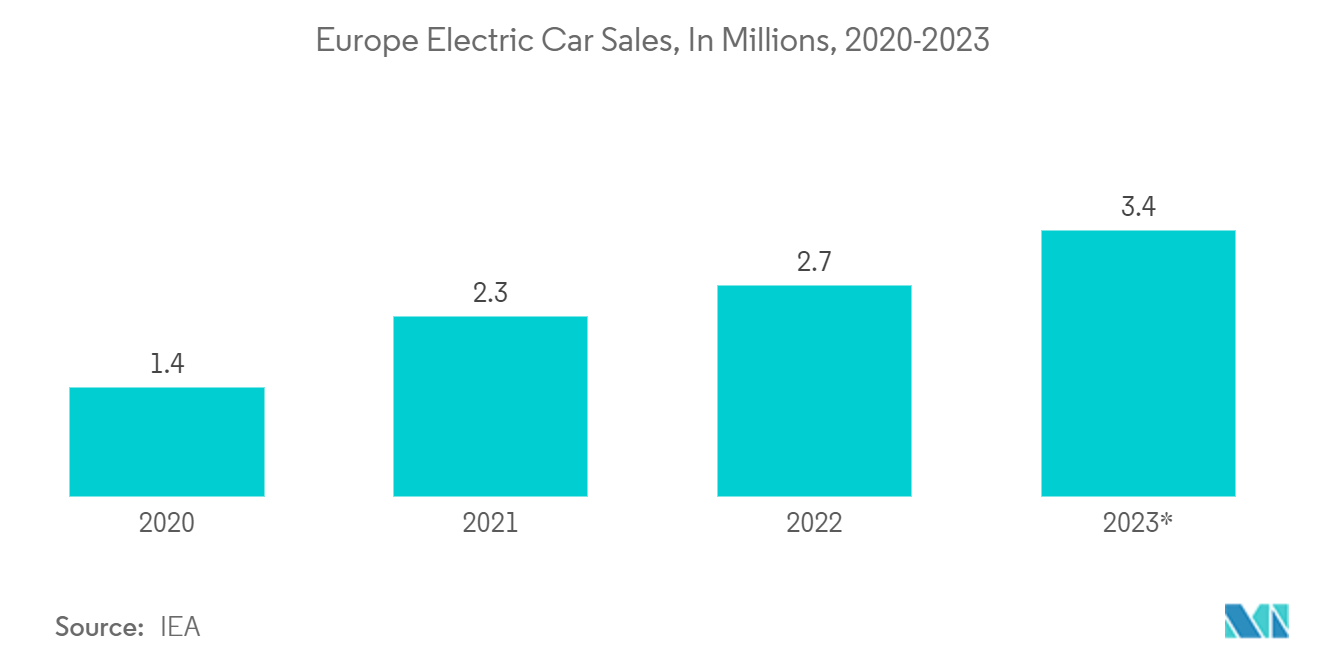Market Trends of Europe Microcontroller (MCU) Industry
Increasing Military Spending in the Region to Augment Market Growth
- Governments' increasing investments in the military and defense industry further drive the demand for microcontrollers. For instance, in March 2023, the UK government announced an investment of EUR 5 billion in defense and new long-term military spending ambition. Through this investment, the government aims to meet the challenges of an increasingly volatile and complex world.
- In April 2023, the French government announced adding EUR 1.5 billion to the 2023 annual budget defense, bringing it from EUR 43.9 billion to approximately EUR 45.4 billion. By 2030, the country's annual defense budget is expected to top EUR 60 billion, nearly double the amount allocated in 2017 (EUR 32 billion).
- According to SIPRI, military spending in Germany has increased in recent years. In 2021, it amounted to almost USD 56 billion. In July 2022, the German federal government adopted the draft of the federal budget for 2023 and the finance plan for 2022-26. The amount spent on core defense in 2023 is estimated to be EUR 50.1 billion (USD 55.4 billion), an increase of EUR 2.76 billion from the finance plan agreed in June 2021. Such a rise in military spending is expected to drive the market studied.
- Microcontrollers are widely used in the aerospace and defense industry owing to their radiation-hardened, radiation-tolerant, and high-reliability properties. These properties help in overcoming harsh environmental conditions. Microcontrollers are used to develop embedded solutions such as operating systems for aircraft control and running other safety-critical systems.
- The increasing use of sensors for capturing data for monitoring and the need for time control capabilities and high precision drive the demand for microcontrollers in the aerospace and defense industry. According to a report from the European Space Agency, microcontrollers are critical components for software-based data acquisition and simple controlling applications giving higher flexibility and autonomous capability.
- Many companies have been investing in the market to provide their customers with various solutions in the military and defense market to adapt to the changing technological needs globally. The military mainly uses InP in laser guidance systems, wireless devices for military applications, and night vision for decision-making and communications applications.

Automotive Industry May Drive the Demand for Microcontrollers
- The European microcontroller (MCU) market is witnessing high growth over the forecast period. The growth is attributed to the shift toward electric vehicles due to rising disposable income and growing concerns about environmental sustainability.
- With the growing adoption of connected and electric cars, the rapidly-progressing automotive market is set to augment the microcontrollers with demands around improved battery performance in EVs, sensors, and other related technologies. Government policies also support the adoption. For instance, the European Commission plans to have at least 30 million electric vehicles on the region's roads by the end of the decade, i.e., 2030. With the adoption of electric vehicles led by governmental efforts, the demand for microcontrollers has been increasing rapidly for features such as blind-spot detection, backup camera, and essential connectivity features.
- According to the Federal Motor Transport Authority, over the past ten years, there has been a steady increase in the number of all-electric vehicles on the road in Germany. Approximately 300,000 electric vehicles were registered in the country in FY 2021. The growing percentage of plug-in electric vehicles in new registrations is startling, given Germany's high demand for diesel and gasoline automobiles. About 13.5% of vehicles sold in 2020 were plug-in electric cars.
- According to the National Union of Foreign Car Representatives, despite starting from a relatively low base, the number of new electric car registrations in Italy maintained a good trend and exceeded 67,500 in 2021. Other alternative types, such as hybrid cars, particularly petrol-electric and diesel-electric models, exhibit the same encouraging trend. Over 497,200 new hybrid electric, plug-in hybrid electric and range-extended vehicle registrations were made in 2021.
- In addition, several EV manufacturers are setting their manufacturing sites in Europe to benefit from its efficient automotive manufacturing industry. For instance, in March 2022, Tesla Inc. obtained the necessary local licenses in Germany to produce electric vehicles at its new plant outside Berlin. When fully operational, the Berlin facility is expected to produce 500,000 vehicles annually, most of which will be Model Y compact crossovers. Such extensive consumption and demand for EVs in the region are anticipated to drive the growth of the automotive MCU market during the forecast period.
- Similarly, several manufacturers are focusing on developing innovative products for the automotive industry and gaining a competitive edge in the market. For instance, in January 2022, Infineon Technologies AG, a global player in automotive semiconductors, announced the extension of its AURIX microcontroller family and the availability of the first samples of its new AURIX TC4x family of 28 nm microcontrollers (MCUs) for the next-generation e-mobility, automotive E/E architectures, ADAS, and affordable AI applications.

